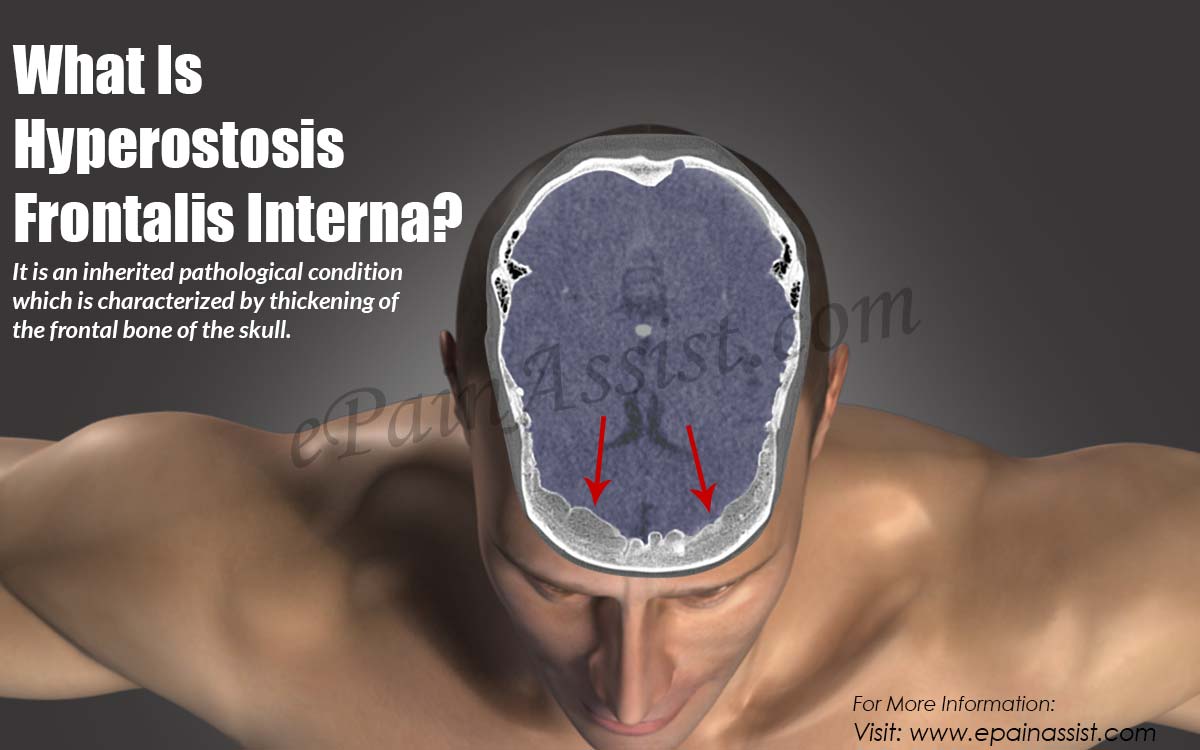What Is Hyperostosis Frontalis Interna?
Hyperostosis Frontalis Interna is an inherited pathological condition which is characterized by thickening of the frontal bone of the skull. This condition is believed to be seen mostly in females. Hyperostosis Frontalis Interna is found to be associated with many different conditions like seizure disorder, migraine headaches, obesity, diabetes insipidus, excessive hair growth, and abnormality in the function of the sex glands. There may be increased levels of increased serum alkaline phosphatase and serum calcium in individuals with Hyperostosis Frontalis Interna.
This condition is inherited as an autosomal dominant trait meaning that one copy of the defective gene from either parent is good enough for an individual to get Hyperostosis Frontalis Interna.
The excessive growth in the frontal bone of the skull in Hyperostosis Frontalis Interna is seen only on radiological studies and cannot be seen visibly with naked eyes. This is precisely the reason why many cases of Hyperostosis Frontalis Interna go undetected.

What Causes Hyperostosis Frontalis Interna?
The root cause as to why there is thickening of the frontal bone is not known. Researchers are of the opinion that this disease is inherited as an autosomal dominant trait meaning that only one copy of the defective gene inherited from either parent is good enough to cause Hyperostosis Frontalis Interna. As of now, the exact gene is not known which is responsible for the development of Hyperostosis Frontalis Interna.
What Are The Symptoms Of Hyperostosis Frontalis Interna?
The primary presenting feature of Hyperostosis Frontalis Interna is excessive growth in the frontal bone on the skull. This excessive growth cannot be visible with the naked eye and can only be seen on radiological studies in the form of an x-ray. This is one of the reasons why a lot of cases of Hyperostosis Frontalis Interna go undetected.
Other than this, there are no significant symptoms that an individual with Hyperostosis Frontalis Interna experiences. However, there are certain risk factors which predispose an individual to having Hyperostosis Frontalis Interna. These factors are obesity, diabetes insipidus, and migraine headaches.
Individuals with Hyperostosis Frontalis Interna will also have abnormality in the functioning of the sexual glands and there are cases in which male sexual characteristics are acquired by females.
Individuals with Hyperostosis Frontalis Interna also tend to have frequent bouts of seizures some of which may last for more than a minute followed by loss of consciousness. Vision abnormalities and excessive body hair are also something that is seen individuals with Hyperostosis Frontalis Interna.
How Is Hyperostosis Frontalis Interna Treated?
As of now, there is no known cure for Hyperostosis Frontalis Interna. The treatment given for this condition is purely symptomatic. Strict diet for weight loss and controlling obesity is advised. Migraine headaches can be treated with preventive and abortive medications. The frequent bouts of seizures can be controlled with standard anticonvulsant medications.
Other than this, genetic counseling may be of help for patients and their families regarding Hyperostosis Frontalis Interna. Other than this, treatment is purely supportive for Hyperostosis Frontalis Interna.
